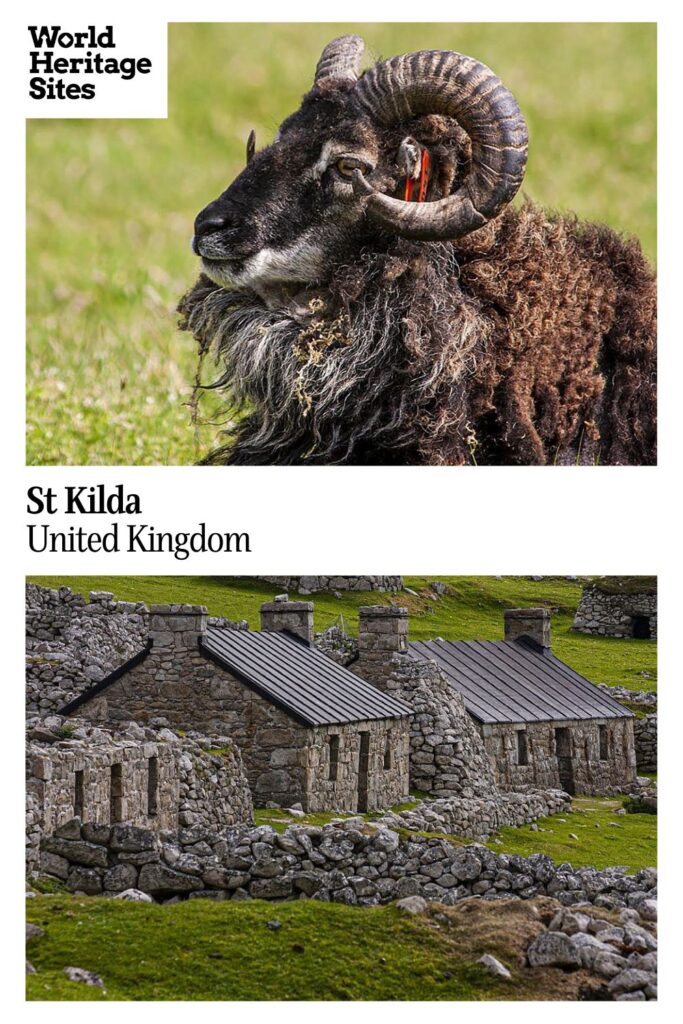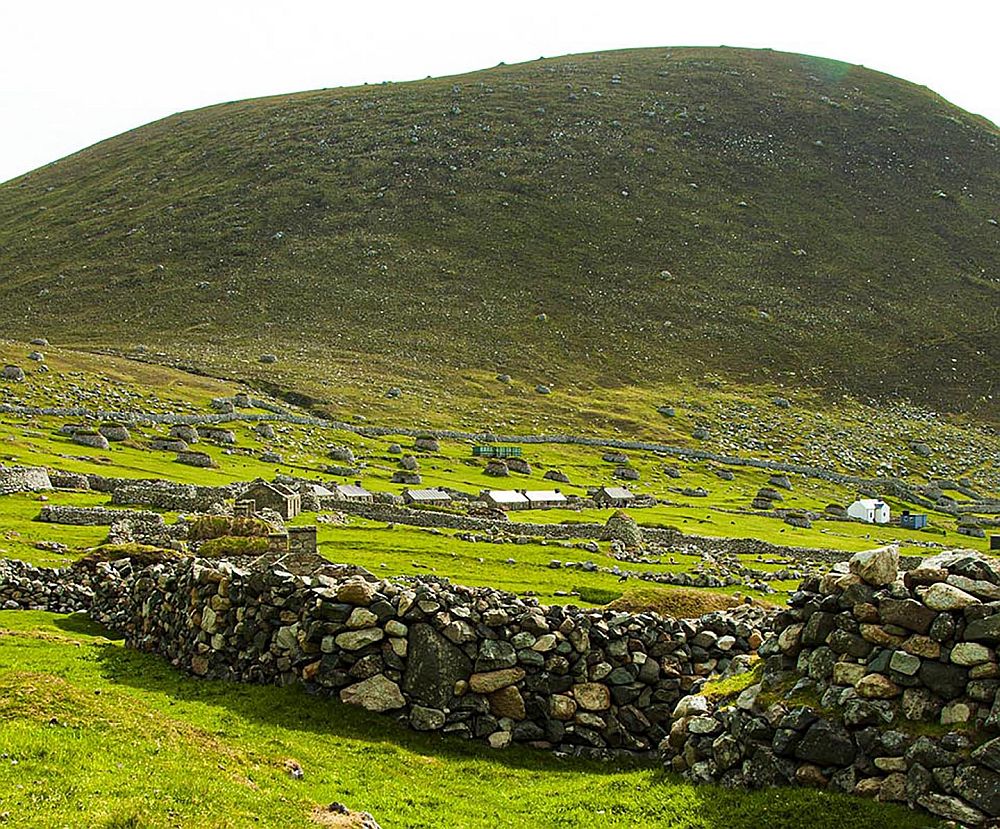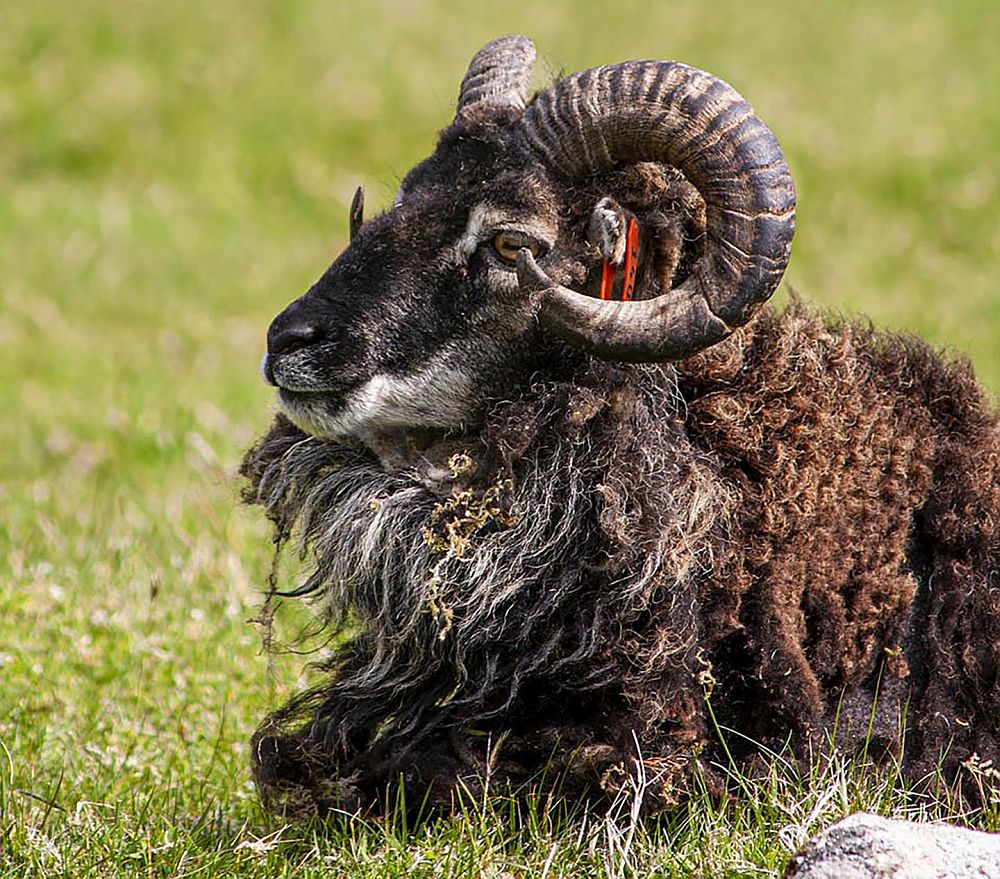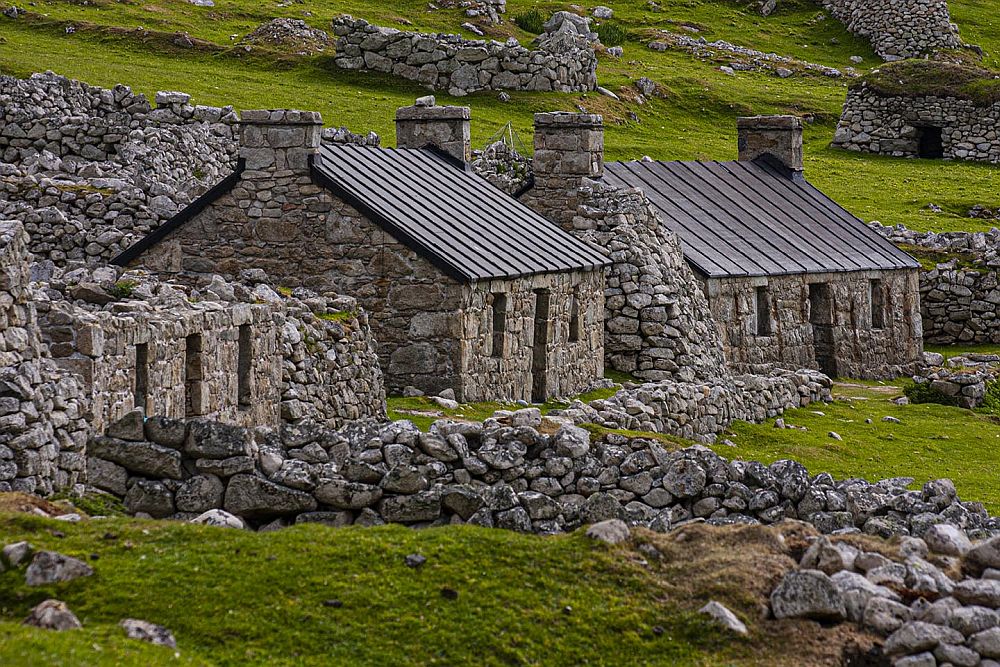St Kilda
By Stillman Rogers
What is St. Kilda?
St. Kilda is more than an island: it is an archipelago of several islands and sea stacks 100 miles west of Scotland, formed by the collapse of a mid-ocean volcano millennia ago. Of the four islands – Hirta, Dun Soay and Boreray – the island of Hirta has had the largest and longest human population and is the most visited. The archipelago is owned and operated by the National Trust of Scotland.
Disclosure: This article contains affiliate links. Making a purchase through an affiliate link will mean a small commission for this website. This will not affect your price.

Why is St. Kilda a UNESCO World Heritage site?
St Kilda bears witness to 2,000 to 5,000 years of isolated human settlement. The land use of their subsistence economy was based on birds, land cultivation under extreme conditions, and the husbandry of a sheep breed unchanged for millennia. It is a land of cliffs plunging directly to the sea and unique underwater scenery; it is also a sanctuary for several varieties of sea birds, including gannets, puffins, and fulmars, their population exceeding 1,000,000.

What can you expect on a visit to St. Kilda?
You will at first be struck by the desolate barren landscape, the precipitous terrain and how tenuous the existence must have been for the hardy souls who once lived here. A row of stone cottages – a few restored, but most standing roofless – sit along the main “street” of the village. In 1930, at the request of the entire population, all of the inhabitants were relocated to mainland Scotland islands.
On the leading edge of the North Atlantic, St Kilda is constantly buffeted by the harsh winds and seas. As you tour this UNESCO site and learn the stories of its people, you’ll feel the isolation of their lives, and imagine wresting a living from sheep and from barley and wheat, which could only be grown in stone-walled enclosures (cleits) that protected them. You’ll see the soaring cliffs of Hirta, Soay, Boreray and the sea stacks of Lee and An Armin, where men and boys lowered themselves over the edges to capture sea birds for their feathers, and to seize their eggs.
Perhaps most astonishing is to learn how long these islands have been populated. Excavations have found stone tools indicating that the islands may have been visited, or even settled, as long ago as 4,000 to 5,000 years ago. Early Christian crosses carved in cottage walls probably indicate that Irish missionaries came here seeking the “White Martyrdom” of exile, and Norse steatite vessels indicate their presence.

Is it worth visiting St. Kilda?
St. Kilda is definitely not for everyone. Getting there isn’t easy, so only those with good sea legs and a love of the lost places of this earth will find the trip worthwhile. But there is a great satisfaction in walking in the footsteps of the long line of intrepid travelers and settlers who have come here before you. Travelers who want to explore, even for a limited time, a mid-Atlantic ghost town with a deep history of primitive human existence are drawn to these islands.
Ornithologists and avid birders will appreciate St. Kilda for the almost a million seabirds that live here, including gannets, shearwaters and storm petrels. Stays on Hirta are usually 4 to 5 hours long depending on conditions there and along the sea route.

Tips for visiting St. Kilda
Because of the mid-ocean location of the archipelago, the weather and sea conditions are unpredictable. Be prepared with foul weather gear as well as a well-fitting hat or headwear. Sturdy walking or hiking boots are highly recommended, particularly for hiking to the higher elevations, in the fields and among cleits. You will also want good camera equipment to capture this hard-to-reach and unique human and natural treasure. It is not recommended for children under the age of 12 years.
While there are no other UNESCO sites nearby St. Kilda, if you’ll be traveling elsewhere in Scotland or other parts of the UK, there are plenty of World Heritage sites to visit.
Where is St. Kilda?
St. Kilda and its archipelago are in the North Atlantic, more than 100 miles from the west coast of Scotland, and more than 45 miles from the Hebridean Isles of Harris and Lewis. The only way to get there is by boat. The wind-swept North Atlantic lashes at the cliffs, and storms often make it impossible to approach for days on end.
Access is limited to regulated cruise boats from the Scottish islands of Harris and Lewis and the small ship luxury cruise line Hebridean Island Cruises. Smaller day-cruise vessels carry up to 12 passengers, who should be prepared for rough crossings and delays or cancelations due to weather. Crossings for day cruises take approximately 2.5 hours in each direction.
Besides a small campsite, there is nowhere to stay on St. Kilda. Instead, stay on the Isle of Harris. Use the map below to find accommodations:
For more information about the Saint Kilda Archipelago, see its official website.
Have you been to St. Kilda? If so, do you have any additional information or advice about this UNESCO World Heritage site? Please add your comments below!

